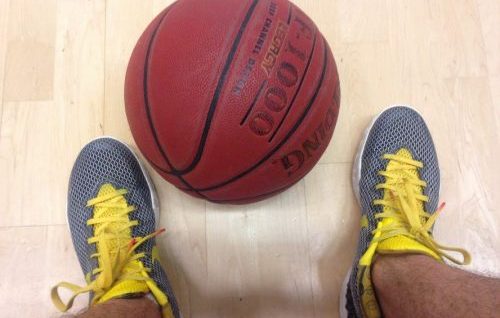The past two-three month has been potted with former staff and students getting in touch. Any leader / teacher will tell you, these updates, however they arrive, are often very special, heart-warming and affirming. This update was all of that and also very different. So much so, I took it upon myself to use the experience as a ‘Power for Good.’
It owes a lot to Nathan, the students who got in touch, for being as courageous and honest as he was. Mike Armiger @MikeArmiger for his professional contribution, pretty much throughout. Howard Tear for meeting me and going over the article to ensure it was factually correct and representative. There is a thank you in there for Pranav Patel @MrPatelsawesome for the initial prompt to “do something with it” in the first place from. Julian Stanley for his encouragement to think more broadly and his tireless efforts to raise the importance of mental health issues in education through the Education Support Partnership. There is a note to my former colleagues in the PE department, I hope you get to read this post – via the TES. Thank you Ed Dorrell for your endorsement.
It was early October and the nights were drawing in. The children had gone to bed. My wife was out and I was, effectively, home alone.
I spent the evening on Twitter. What began as sharing the fantastic work of the Education Support Partnership turned into something quite different.
Nathan Clifford, a former student, retweeted one of my tweets with an applause emoji. An open conversation started via Twitter, and he told me that he shared my tweet because it highlighted the importance of raising awareness of mental health issues.
I clicked his profile and noticed his backdrop image. “Me, By Experience. Myself and Mental Health.” I got the sense that a direct message might be more appropriate.
We talked a little. What he told me left me speechless, feeling immensely proud and simultaneously guilty.
“The support I got at college, quite honestly kept me alive.”
Mental health support
I taught Nathan PE at Richard Tauntons College some 12 years ago.
Now, before I go into his story, I want to stress a couple of things. Our PE and sports department was deeply committed to our pupils, and we were led by the example of Howard Tear. He was a phenomenal coach and a much-loved teacher.
Outside of traditional lessons, we coached the college sports teams – there were matches most days, and it was a rarity if three or more staff weren’t present at the fixtures. One would be coaching, one officiating and the others would be cheering on from the touchline or sidelines.
Our relationships with the students were strong. We’d encouraged and supported them through wins and losses – both as a team and as individuals.
- Exclusive: Pupils attempt suicide after waiting 10 months for help
- NHS ‘failing’ pupils on mental health, say MPs
- ‘Wellbeing is an issue for everyone, including headteachers’
This is was how I got to know Nathan.
He travelled into college every day to be a part of the Tauntons College Sports Academy. He was a smart basketballer. Tactically astute, a student of the game. It was because Nathan was a “thinker” (academically smart, too) that staff put his unusually fragile behaviour down to being prone to a little bit of “big game nerves”.
As his “episodes” became more regular, we became more dismissive, with his behaviour being categorised as “attention-seeking”. Other students referred to “Nathan’s panic attacks”.
After getting in touch with him again, I planned for Nathan to share his perspective on college life. Living with mental health is not linear. What I have learned from working on this article with Nathan is that his wellbeing fluctuates. We have snatched at exchanges and comments but reliving and writing his reflections has, in itself, been a challenge. And I thank him here, now, for doing so. There were times when contributing was simply not possible.
Nathan’s recollections of college are quite different from that of the teaching staff.
“I became very overwhelmed by the pressures of college, both from outside and from within. I had low self-esteem and constantly struggled to measure up to the version of myself I wanted to be. I felt that anything less than 100 per cent was a failure, and, consequently, I never dropped a mark in my studies. I felt very disassociated and struggled with thoughts of suicide.”
We had no idea that Nathan felt this way and was experiencing this level of distress.
“I started having panic attacks before and after basketball games, because I was unable to cope with the added stress of performing well and not letting my team down. I constantly felt as though I was on a treadmill that I couldn’t escape. It meant a lot to have a coach like Howard, who was an incredible source of support at this challenging time. He never let me give up, and gave me his time and encouragement as often as I needed it -– although he never let me get off easy either. He is a person who I still look up to today as a role model.”
Nathan’s reflections concurs with Howard’s own. He could see that Nathan was “troubled,” and he did what any teacher would have done. He encouraged and supported him. He listened to him. They still work together today, with Nathan refereeing games – when he feels up to it.
In those early years, I knew very little, if anything at all, about mental health. We all supported and encouraged Nathan, as we did with all of the students. Our PE office was constantly full of student traffic – they would pop in engage with us, with one another, talk about sport, talk about the game, talk about the upcoming fixture. We would listen to them no matter what. But back then, mental health wasn’t discussed in the way it was now. We didn’t have training for the staff on their own mental health or wellbeing, let alone the kids.
There was one game in which is all came to a head for Nathan. He had successfully executed some critical free-throws, but, post-match, his response was really distressing.
I was woefully ill-prepared when he failed to respond to his own name being called. He sat at the back of the sports hall floor, heels up to his backside, disconnected. Quietly panting. I sat with him for what seemed like too long. He was in no fit state to get the train home. I drove him back to Whitley, which was 15 miles in the opposite direction. I met his father, a familiar face from basketball games, and I spoke to him about the game and Nathan’s behaviour. We put it down to the pressures of competition.
I guess this is why I feel so guilty now. If we only knew better, we could have done better.
“I was also lucky to have Kristian, the college’s head of PE, looking out for me after witnessing one of my particularly bad episodes. I always felt like he had my back, and as anyone struggling to cope with mental health knows, that’s something that’s crucial to recovery.”
In our private conversation, Nathan explained that since college he has been living with “schizoaffective” disorder, first diagnosed when he was 19, just after he left College.
“I’ve been through trauma. I can experience psychosis. I’ve been detained. I get paranoid. I disassociate. I get depressed. I hear voices. “
He told me that his “journey of recovery” has been “a long and bumpy road.” We discussed that neither of us were equipped to handle the situation back then.
The good news is that he says he is in “a really good place now and I am using the opportunity to support others”. He’s working with Southern Health, as an Expert by Experience, using his own lived experience to effect change within the trust, engaging and supporting others.
Coming out of this, what I do now – and what Mike Armiger, a mental health and education adviser, constantly models for me – is what I can. So I am with this article.
If it helps just one student, or one teacher, than that’s brilliant.
Thank you to Nathan for offering his viewpoint, and to both Howard Tear and Mike Armiger for their support in getting this written.
For more information on schizoaffective disorder, please click here.


